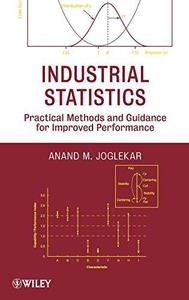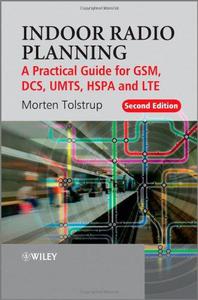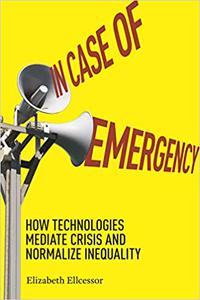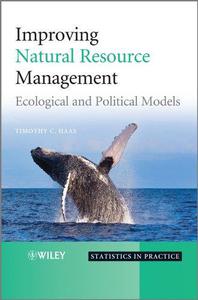
 |
 Inpatient Anticoagulation By Scott A. Flanders, Sanjay Saint(eds.) 2011 | 430 Pages | ISBN: 0470602112 | PDF | 5 MB The first practical guide for hospitalists on the use of anticoagulants in hospitalized patientsThis edited volume provides a comprehensive overview of the vital topic of anticoagulation in the hospital setting. Designed specifically for use by hospital-based clinicians and associated hospital-based staff, this fully evidence-based book addresses the most commonly used anticoagulant agents, the latest advances in anticoagulation drugs, and primary indications for their use at therapeutic levels. This thorough, easy-to-use reference summarizes the most important guidelines and medical literature on anticoagulation. It features a careful review of the epidemiology and treatment of complications associated with anticoagulants. Unique topics include transition of care and practical strategies for developing and implementing quality improvement programs to enhance the administration and safety of anticoagulants. This concise resource also covers: Antiplatelet medicationsThe treatment and prevention of venous thromboembolism in medical patientsVenous thromboembolism prophylaxis in surgical patientsPeri-operative management of oral anticoagulants and antiplatelet agentsPrevention of cardioembolic strokeAntithrombotics for ischemic strokeAntithrombotic therapy for non-ST elevation acute coronary syndromeHemorrhagic complications of anticoagulants in hospitalized patientsHeparin-induced thrombocytopeniaHospitalists and other members of the patient care team will find that Inpatient Anticoagulation answers their questions with dependable and timely information.Content: Chapter 1 Pharmacology of Parenteral Anticoagulants (pages 1-24): Kathleen H. McCool and Daniel M. WittChapter 2 Pharmacology of Vitamin K Antagonists (pages 25-46): Jaekyu Shin and Steven R. KayserChapter 3 Antiplatelet Medications (pages 47-65): Michael Kornfeld and Joseph R. MunsayacChapter 4 Newer Oral Anticoagulants (pages 67-80): Taki Galanis and Geno J. MerliChapter 5 Prevention of Venous Thromboembolism in Medical Patients (pages 81-106): Alex C. Spyropoulos and Charles E. MahanChapter 6 Prevention of Venous Thromboembolism in Surgical Patients (pages 107-136): Nancy Torres Finnerty and Franklin MichotaChapter 7 Treatment of Acute Venous Thromboembolism in Hospitalized Patients (pages 137-160): Tracy Minichiello, Lauren Doctoroff and Elizabeth A. FarrellChapter 8 Perioperative Management of Oral Anticoagulants and Antiplatelet Agents (pages 161-177): Ramiro Jervis and Andrew DunnChapter 9 Prevention of Cardioembolic Stroke (pages 179-203): Ali Mahajerin and Warren J. ManningChapter 10 Antithrombotics for Ischemic Stroke (pages 205-222): Fadi B. Nahab and Sakib QureshiChapter 11 Antithrombotic Therapy for Non?ST?Elevation Acute Coronary Syndrome (pages 223-240): David Lao and Andrew BoyleChapter 12 Parenteral Anticoagulants: Special Considerations in Patients with Chronic Kidney Disease and Obesity (pages 241-290): Sarah A. Spinler, Millie Rajyaguru, Julie K. Atay and John FanikosChapter 13 Hemorrhagic Complications of Anticoagulants in Hospitalized Patients (pages 291-330): Allison Burnett, Jason Cohen and David A. GarciaChapter 14 Heparin?Induced Thrombocytopenia (pages 331-359): David Feinbloom and John Fani SrourChapter 15 Transitions in Care: Inpatient Anticoagulation (pages 361-375): Neil Gupta, Diane Sliwka and Margaret C. FangChapter 16 Optimizing Inpatient Anticoagulation: Strategies for Quality Improvement (pages 377-414): Greg Maynard, Ian Jenkins, Brian Clay, Michael Montazeri and Doug Humber  Inorganic Structural Chemistry, Second Edition By Dr. rer. nat. Ulrich Muller(auth.) 2006 | 278 Pages | ISBN: 047001864X | PDF | 12 MB The essential introduction to the understanding of the structure of inorganic solids and materials. This revised and updated 2nd Edition looks at new developments and research results within Structural Inorganic Chemistry in a number of ways, special attention is paid to crystalline solids, elucidation and description of the spatial order of atoms within a chemical compound. Structural principles of inorganic molecules and solids are described through traditional concepts, modern bond-theoretical theories, as well as taking symmetry as a leading principle.Content: Chapter 1 Introduction (page 1): Chapter 2 Description of Chemical Structures (pages 2-11): Chapter 3 Symmetry (pages 12-29): Chapter 4 Polymorphism and Phase Transitions (pages 30-38): Chapter 5 Chemical Bonding and Lattice Energy (pages 39-44): Chapter 6 The Effective Size of Atoms (pages 45-51): Chapter 7 Ionic Compounds (pages 52-61): Chapter 8 Molecular Structures I: Compounds of Main Group Elements (pages 62-72): Chapter 9 Molecular Structures II: Compounds of Transition Metals (pages 73-84): Chapter 10 Molecular Orbital Theory and Chemical Bonding in Solids (pages 85-102): Chapter 11 The Element Structures of the Nonmetals (pages 103-117): Chapter 12 Diamond?Like Structures (pages 118-127): Chapter 13 Polyanionic and Polycationic Compounds. Zintl Phases (pages 128-149): Chapter 14 Packings of Spheres. Metal Structures (pages 150-156): Chapter 15 The Sphere?Packing Principle for Compounds (pages 157-165): Chapter 16 Linked Polyhedra (pages 166-189): Chapter 17 Packings of Spheres with Occupied Interstices (pages 190-211): Chapter 18 Symmetry as the Organizing Principle for Crystal Structures (pages 212-225): Chapter 19 Physical Properties of Solids (pages 226-240): Chapter 20 Nanostructures (pages 241-245): Chapter 21 Pitfalls and Linguistic Aberrations (pages 246-248):  Infinity: A Very Short Introduction (Very Short Introductions) by Ian N. Stewart English | July 23, 2017 | ISBN: 0198755236 | True PDF | 144 pages | 14.3 MB Infinity is an intriguing topic, with connections to religion, philosophy, metaphysics, logic, and physics as well as mathematics. Its history goes back to ancient times, with especially important contributions from Euclid, Aristotle, Eudoxus, and Archimedes. The infinitely large (infinite) is intimately related to the infinitely small (infinitesimal). Cosmologists consider sweeping questions about whether space and time are infinite. Philosophers and mathematicians ranging from Zeno to Russell have posed numerous paradoxes about infinity and infinitesimals. Many vital areas of mathematics rest upon some version of infinity. The most obvious, and the first context in which major new techniques depended on formulating infinite processes, is calculus. But there are many others, for example Fourier analysis and fractals.  Infectious Diseases: A Geographic Guide By 2011 | 478 Pages | ISBN: 0470655291 | PDF | 9 MB This concise and practical guide describes infections in geographical areas and provides information on disease risk, concomitant infections (such as co-prevalence of HIV and tuberculosis) and emergingbacterial, viral and parasitic infections in a given geographical area of the world. Infectious Diseases: A Geographic Guideis divided according to United Nations world regions and addresses geographic disease profiles, presenting symptoms and incubation periods of infections. Each chapter contains a section on the coverage of the childhood vaccination programs in the countries included in that region. Chapters also include descriptions of infectious disease risk and problems with resistant bacteria in each region (e.g. antibiotic resistance in Salmonella infections in Southeast Asia). For theclinician, this book is a tool to generate differential diagnoses by considering the geographical history, as well the presenting symptoms and duration of illness.For thetravel medicine specialist, this book provides information on risks of different diseases at various destinations and is particularly useful in advising long-term travelers.Content: Chapter 1 Historical Overview of Global Infectious Diseases and Geopolitics (pages 1-10): Francis E. G. CoxChapter 2 Detection of Infectious Diseases Using Unofficial Sources (pages 11-21): Lawrence C. Madoff and David O. FreedmanChapter 3 Microbes on the move: Prevention, Curtailment, Outbreak (pages 22-30): Patricia Schlagenhauf, Giles Poumerol and Francisco Santos?O'ConnorChapter 4 Diagnostic Tests and Procedures (pages 31-52): Larry I. Lutwick, Marc Mendelson and Eskild PetersenChapter 5 East Africa: Madagascar and Indian Ocean Islands (pages 53-63): Philippe Gautret and Philippe ParolaChapter 6 Eastern Africa (pages 64-83): Andreas Neumayr and Christoph HatzChapter 7 Central Africa (pages 84-97): Gerd D. Burchard and Stephan EhrhardtChapter 8 North Africa (pages 98-110): Philippe Gautret, Nadjet Mouffok and Philippe ParolaChapter 9 Southern Africa (pages 111-127): Marc Mendelson, Olga Perovic and Lucille BlumbergChapter 10 West Africa (pages 128-138): Joanna S. Herman and Peter L. ChiodiniChapter 11 Eastern Asia (pages 139-154): Susan MacDonald, Yasuyuki Kato and Annelies Wilder?SmithChapter 12 South Central Asia (pages 155-169): Prativa Pandey, Holly Murphy and Ashish BhallaChapter 13 South?Eastern Asia (pages 170-187): Daniel H. Paris and Nicholas J. WhiteChapter 14 Western Asia and the Middle East: Part 1 (pages 188-196): Eyal Leshem and Eli SchwartzChapter 15 Western Asia and the Middle East: Part 2 (pages 197-202): Jaffar A. Al?Tawfiq and Ziad A. MemishChapter 16 Eastern Europe (pages 203-217): Natalia Pshenichnaya and Malgorzata PaulChapter 17 Northern Europe (pages 218-229): Birgitta Evenga, Audrone Marcinkute and Eskild PetersenChapter 18 Southern Europe (pages 230-237): Francesco Castelli, Fabio Buelli and Pier Francesco GiorgettiChapter 19 Western Europe (pages 238-260): Peter J. de VriesChapter 20 Caribbean (pages 261-272): Jana I. Preis and Larry I. LutwickChapter 21 Central America (pages 273-289): Julius B. Salamera and Larry I. LutwickChapter 22 South America (pages 290-308): Rodrigo Nogueira Angerami and Luiz Jacintho da SilvaChapter 23 Northern America (pages 309-325): Barbra M. Blair, Philip R. Fischer, Michael Libman and Lin H. ChenChapter 24 Australia and New Zealand (pages 326-340): Karin Leder, Joseph Torresi and Marc ShawChapter 25 Oceania (pages 341-359): Karin Leder, Joseph Torresi and Marc ShawChapter 26 Arctic and Antarctica (pages 360-373): Anders Koch, Michael G. Bruce and Karin LadefogedChapter 27 The Immunosuppressed Patient (pages 374-392): Brian T. Montague, Terri L. Montague and Maria D. MilenoChapter 28 Emerging Infections (pages 393-403): Mary Elizabeth WilsonChapter 29 Migration and the Geography of Disease (pages 404-413): Rogelio Lopez?Velez, Francesca F. Norman and Jose?Antonio Perez?MolinaChapter 30 Climate Change and the Geographical Distribution of Infectious Diseases (pages 414-423): David Harley, Ashwin Swaminathan and Anthony J. McMichael
 Industrial Statistics: Practical Methods and Guidance for Improved Performance By Anand M. Joglekar(auth.) 2010 | 280 Pages | ISBN: 0470497165 | PDF | 4 MB HELPS YOU FULLY LEVERAGE STATISTICAL METHODS TO IMPROVE INDUSTRIAL PERFORMANCEIndustrial Statistics guides you through ten practical statistical methods that have broad applications in many different industries for enhancing research, product design, process design, validation, manufacturing, and continuous improvement. As you progress through the book, you'll discover some valuable methods that are currently underutilized in industry as well as other methods that are often not used correctly. With twenty-five years of teaching and consulting experience, author Anand Joglekar has helped a diverse group of companies reduce costs, accelerate product development, and improve operations through the effective implementation of statistical methods. Based on his experience working with both clients and students, Dr. Joglekar focuses on real-world problem-solving. For each statistical method, the book: Presents the most important underlying concepts clearly and succinctly Minimizes mathematical details that can be delegated to a computer Illustrates applications with numerous practical examples Offers a "Questions to Ask" section at the end of each chapter to assist you with implementation The last chapter consists of 100 practical questions followed by their answers. If you're already familiar with statistical methods, you may want to take the test first to determine which methods to focus on. By helping readers fully leverage statistical methods to improve industrial performance, this book becomes an ideal reference and self-study guide for scientists, engineers, managers and other technical professionals across a wide range of industries. In addition, its clear explanations and examples make it highly suited as a textbook for undergraduate and graduate courses in statistics.Content: Chapter 1 Basic Statistics: How to Reduce Financial Risk? (pages 1-26): Chapter 2 Why Not to Do the Usual t?Test and What To Replace it With? (pages 27-47): Chapter 3 Design of Experiments: Is it Not Going to Cost Too Much and Take Too Long? (pages 48-76): Chapter 4 What is the Key to Designing Robust Products and Processes? (pages 77-100): Chapter 5 Setting Specifications: Arbitrary or is There a Method to It? (pages 101-120): Chapter 6 How to Design Practical Acceptance Sampling Plans and Process Validation Studies? (pages 121-137): Chapter 7 Managing and Improving Processes: How to Use an At?a?Glance?Display? (pages 138-158): Chapter 8 How to Find Causes of Variation by Just Looking Systematically? (pages 159-173): Chapter 9 Is My Measurement System Acceptable and How to Design, Validate, and Improve It? (pages 174-189): Chapter 10 How to Use Theory Effectively? (pages 190-206): Chapter 11 Questions and Answers (pages 207-250):
 Indoor Radio Planning: A Practical Guide for GSM, DCS, UMTS, HSPA and LTE, Second Edition By Morten Tolstrup(auth.) 2011 | 471 Pages | ISBN: 0470710705 | PDF | 16 MB Why is indoor coverage needed, and how it is best implemented? As the challenge of providing higher data speeds and quality for mobile applications intensifies, ensuring adequate in-building and tunnel coverage and capacity is increasingly important. A unique, single-source reference on the theoretical and practical knowledge behind indoor and tunnel radio planning,Indoor Radio Planning, Second Edition provides an overview of mobile networks systems and coverage solutions with GSM, UMTS, HSPA and LTE cellular systems technologies as a backdrop. All of the available solutions, from basic passive distributed antenna systems (DAS) through to advanced fiber optic systems supporting MIMO and LTE, are discussed in detail to give the reader a good understanding. In addition, there is a section covering multi-operator systems, as this becomes a more and more utilized approach. Systematically moving from the basic considerations through to advanced indoor planning, aspects such as upgrading passive DAS from 2G to 3G, noise analysis, link budgets, traffic calculations and software tools that can be used to help create in-building designs are also covered. Femtocells, outdoor DAS and tunnel radio planning are newly included in this edition. * A new version of the bestseller, updated with an introduction to LTE and treatments of modulation principle, DAS systems for MIMO/LTE , designing repeater systems and elevator coverage * Addresses the challenge of providing coverage inside train, and high speed rail * Outlines the key parameters and metrics for designing DAS for GSM, DCS, UMTS, HSPA & LTE * Essential reading for engineering and planning personnel at mobile operators, also giving a sound grounding in indoor radio planning for equipment manufacturers * Written by a leading practitioner in the field with more than 20 years of practical experienceContent: Chapter 1 Introduction (pages 1-3): Chapter 2 Overview of Cellular Systems (pages 5-99): Chapter 3 Indoor Radio Planning (pages 101-121): Chapter 4 Distributed Antenna Systems (pages 123-202): Chapter 5 Designing Indoor DAS Solutions (pages 203-273): Chapter 6 Traffic Dimensioning (pages 275-294): Chapter 7 Noise (pages 295-328): Chapter 8 The Link Budget (pages 329-344): Chapter 9 Tools for Indoor Radio Planning (pages 345-356): Chapter 10 Optimizing the Radio Resource Management Parameters on Node B when Interfacing to an Active DAS, BDA, LNA or TMA (pages 357-365): Chapter 11 Tunnel Radio Planning (pages 367-411): Chapter 12 Covering Indoor Users from the Outdoor Network (pages 413-436):  Anna Suranyi, "Indentured Servitude: Unfree Labour and Citizenship in the British Colonies" English | 2021 | ISBN: 0228006686, 0228006678 | 288 pages | EPUB | 8.1 MB Hundreds of thousands of British and Irish men, women, and children crossed the Atlantic during the seventeenth century as indentured servants. Many had agreed to serve for four years, but large numbers had been trafficked or "spirited away" or were sent forcibly by government agencies as criminals, political rebels, or destitute vagrants. In Indentured Servitude Anna Suranyi provides new insight into the lives of these people. The British government, Suranyi argues, profited by supplying labour for the colonies, removing unwanted populations, and reducing incarceration costs within Britain. In addition, it was believed that indigents, especially destitute children, benefited morally from being placed in indenture. Capitalist entrepreneurs who were influential at the highest levels of government made their fortunes from Atlantic trade in goods, indentured servants, and slaves, and their participation in the servant trade contributed to the commercialization of criminal justice. Suranyi breaks new ground in showing how indentured servitude was challenged: once in the colonies, indentured servants adapted resourcefully to their circumstances and rebelled against unfair conditions and abuse by suing their masters, by running away, or through outright revolt. Emerging ideas about race and citizenship led to vehement public debate about the conditions of indentured servants and the ethics of indenture itself, prompting legislation that aimed to curb the worst excesses while slavery continued to expand unchecked.
 Elizabeth Ellcessor, "In Case of Emergency: How Technologies Mediate Crisis and Normalize Inequality" English | ISBN: 1479811629 | 2022 | 240 pages | PDF | 2 MB A much-needed look at the growth of emergency media and its impact on our lives  Improving Natural Resource Management: Ecological and Political Models By Timothy C. Haas(auth.) 2011 | 261 Pages | ISBN: 0470661135 | PDF | 3 MB The decision to implement environmental protection options is a political one. These, and other political and social decisions affect the balance of the ecosystem and how the point of equilibrium desired is to be reached. This book develops a stochastic, temporal model of how political processes influence and are influenced by ecosystem processes and looks at how to find the most politically feasible plan for managing an at-risk ecosystem. Finding such a plan is accomplished by first fitting a mechanistic political and ecological model to a data set composed of observations on both political actions that impact an ecosystem and variables that describe the ecosystem. The parameters of this fitted model are perturbed just enough to cause human behaviour to change so that desired ecosystem states occur. This perturbed model gives the ecosystem management plan needed to reach desired ecosystem states. To construct such a set of interacting models, topics from political science, ecology, probability, and statistics are developed and explored. Key features:Explores politically feasible ways to manage at-risk ecosystems. Gives agent-based models of how social groups affect ecosystems through time. Demonstrates how to fit models of population dynamics to mixtures of wildlife data. Presents statistical methods for fitting models of group behaviour to political action data. Supported by an accompanying website featuring datasets and JAVA code. This book will be useful to managers and analysts working in organizations charged with finding practical ways to sustain biodiversity or the physical environment. Furthermore this book also provides a political roadmap to help lawmakers and administrators improve institutional environmental management decision making.Content: Chapter 1 Introduction (pages 1-13): Chapter 2 Simulator Architecture, Operation, and Example Output (pages 15-26): Chapter 3 Blue Whale Population Management (pages 27-42): Chapter 4 Finding the Most Practical Ecosystem Management Plan (pages 43-58): Chapter 5 An Open, Web?Based Ecosystem Management Tool (pages 59-78): Chapter 6 Influence Diagrams of Political Decision Making (pages 79-95): Chapter 7 Group IDs for the East African Cheetah EMT (pages 97-108): Chapter 8 Modeling Wildlife Population Dynamics with an Influence Diagram (pages 109-121): Chapter 9 Political Action Taxonomies, Collection Protocols, and an Actions History Example (pages 123-142): Chapter 10 Ecosystem Data (pages 143-160): Chapter 11 Statistical Fitting of the Political-Ecological System Simulator (pages 161-177): Chapter 12 Assessing the Simulator's Reliability and Improving its Construct Validity (pages 179-199): Chapter 13 Current Capabilities and Limitations of the Politically Realistic EMT (pages 201-208):  Christopher Hager, "I Remain Yours: Common Lives in Civil War Letters" English | ISBN: 0674737644 | 2018 | 352 pages | EPUB | 4 MB When North and South went to war, millions of American families endured their first long separation. For men in the armies―and their wives, children, parents, and siblings at home―letter writing was the sole means to communicate. Yet for many of these Union and Confederate families, taking pen to paper was a new and daunting task. I Remain Yours narrates the Civil War from the perspective of ordinary people who had to figure out how to salve the emotional strain of war and sustain their closest relationships using only the written word. |